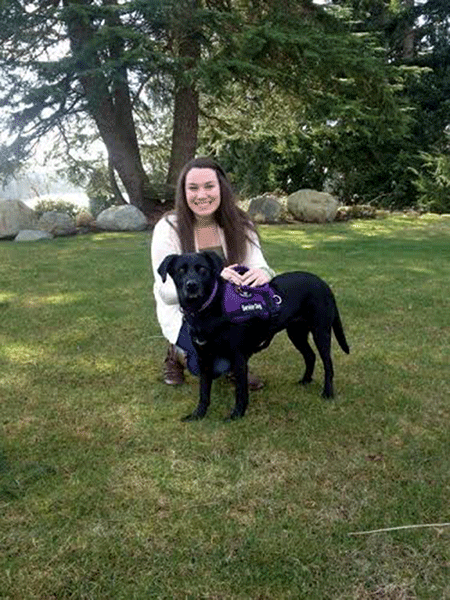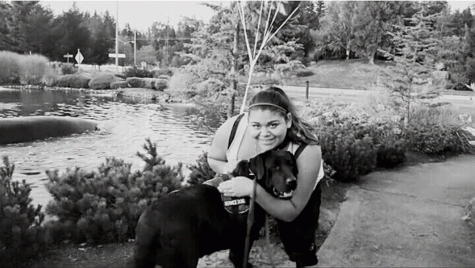Service Dog Awareness

Grace Meno (’16) poses with her service dog, Abby.
At Arlington High School, service dogs are becoming a part of our community. Because of this, there are a few things that the students of AHS need to know about.
Grace Meno is a senior at AHS with a service dog. Abby, her dog, is a seizure alert dog who will be retiring next year. When it comes to etiquette, Meno said that, “The basic rule of thumb is that you should ignore a service dog unless the owner gives you permission to greet the dog or pet him.”
Although Meno lets everyone pet Abby, most handlers will not allow you to. The animal has to be able to focus on his or her owner to ensure their safety.
Although you should ignore the animal, you should always be aware of where the animal is so you don’t accidentally step on, kick, or run into the animal.
Service dogs train for about 8 to 24 months, but that time may fluctuate, given the medical condition of its owner. it may take longer or shorter amounts of time. While all animals are different, dogs need at least 300 hours of training.
To obtain a service animal, you must have a documented disability that the animal can help you through. The Americans with Disabilities Act (ADA) states that, “The work or task a dog has been trained to provide must be directly related to the person’s disability. Dogs whose sole function is to provide comfort or emotional support do not qualify as service animals under the ADA.”
When you are ready to get a dog, you must apply to a program that trains the type of dog you need. The wait time is +18 months and can cost as much as $10,000 to $40,000. Although this is expensive, there are programs that raise money through fundraisers. There are also a few personal trainers you can send your animal to instead of a program.
The amount of time that service animals work for until they retire varies. The owner of a service dog herself, Angelina Cisneros (’19 ) said that if an animal is physically and mentally still able to preform their job, they can continue to work. The dog’s hips, elbows, pelvis, heart, eyes, and hearing should be tested to insure a long, healthy working life. In most cases, dogs retire around the age of 10.

Everyday, more people are using the help of service animals to help them in their daily routines, and AHS is no exception.











